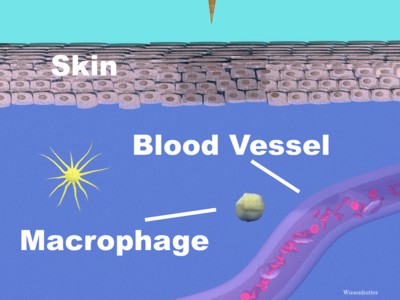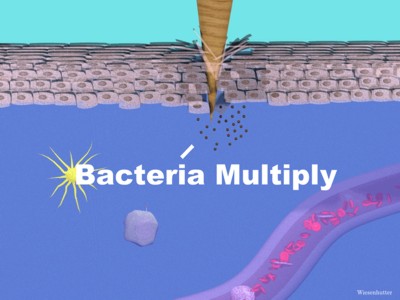U.C.L.A. Rheumatology Pathophysiology of Disease Course Lecture, Second Year Medical School 2005
Biologic Response Modifiers and the Innate Immune Response Part I Page 30
Windows Media Player
QuickTime Media Player
Real Media Player
Three recently approved BRMs are described. Also, TNF's role in the innate immune response is animated.
Animation: Biologic Response Modifiers (BRMs) : Three recently approved BRMs are described.
Animation: TNF and the Innate Response : TNF's role in the innate immune response is animated.
Animation: Biologic Response Modifiers (BRMs) : Three recently approved BRMs are described.
Animation: TNF and the Innate Response : TNF's role in the innate immune response is animated.
Animation: Biologic Response Modifiers (BRMs) : Three recently approved BRMs are described.
Animation: TNF and the Innate Response : TNF's role in the innate immune response is animated.


They included etanercept (enbrel), which has been approved for use since 1999. Etanercept is a human fusion protein in which a dimer of the p75 TNF receptor is genetically combined to the Fc portion of a human IgG1. The Fc portion of the molecule serves as a framework to carry the receptors in the body fluids. The drug is administered as twice weekly subcutaneous injections.
Infliximab (remicade) is also available in the clinic and is administered intravenously, usually on an every two-month basis. It is a chimeric IgG1 anti-TNF monoclonal antibody in which the antigen-binding portion is comprised of mouse protein, whereas the rest of the molecule is human. Adalimumab (humira)is an entirely humanized monoclonal anti-TNF antibody produced by phage display technology. This product was approved for use in 2003, and is administered as a subcutaneous injection once every two weeks.
All three of these products work by interfering with the delivery of TNF to target cells.
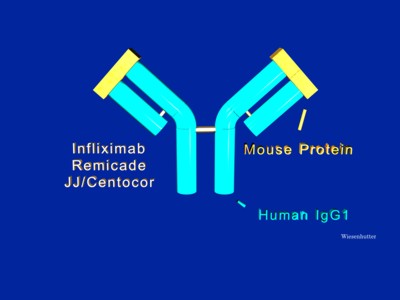
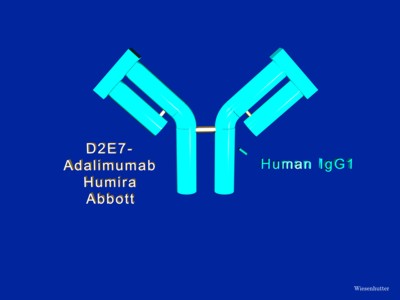
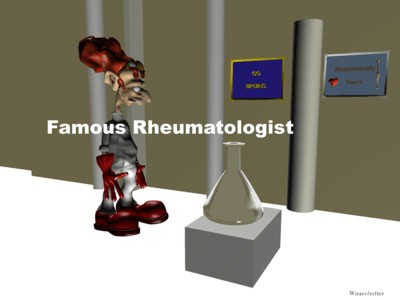
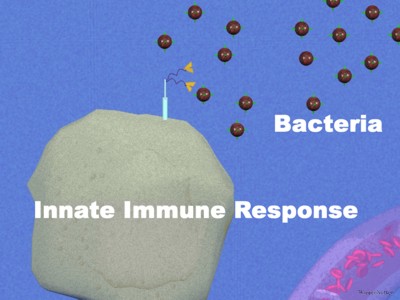
A famous Rheumatologist has offered to help illustrate this point. When he slips and falls in his lab, a splinter enters his skin. Pyogenic bacteria are deposited and rapidly begin to multiply and spread. Fortunately for the good doctor, a macrophage cruising the tissue is present and able to intercede.The macrophage's scavenger receptor is capable of detecting multiple repeating chemical structures displayed by a variety of bacteria types. On contact, both the receptor and the bacteria are internalized, ultimately resulting in activation of the cell nucleus with subsequent new protein synthesis, and cytokine secretion, including the liberation of TNF, as shown here.
The cytokines in this setting serves as a call to arms to other inflammatory cells as well as an indicator to these cells as to the location of the infection.
